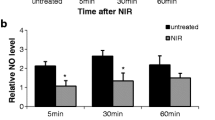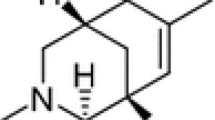Summary
To study the protective effects of radix astragali against anoxic damages to in vitro cultured neurons in rats, NaCN was used to develop a hypoxic model of in vitro cultured neurons from newborn rat cerebral cortex. The cellular morphology, A value (cell survival number) and effluxes of lactate dehydrogenase(LDH) and K+ from cells were measured in the radix astragali group and the control group respectively. After 48 h of anoxia, A value was decreased from 0.325±0. 031 before anoxia to 0.145±0.011, the effluxes of LDH and K+ were increased from 65.80±2.90 U/L and 5. 23±0.11mmol/L before anoxia to 148. 80±8.40 U/L and 7.31±0.18 mmol/L., respectively. It was found that in the anoxic circumstance in the Radix astragali group, the mophological changes were mild, the effluxes of LDH and K+ were decreased and A value increased as compared with those in the control group. It was suggested that Radix astragali could protect the cultured rat neurons against anoxic damages in the anoxic circumstance.
Similar content being viewed by others
References
1995,30:184
1993,9:39
Schmedchel D E, Brightman M W, Marangos P J. Neurons switch from non-neuronal enolase to neuronspecific enolase during differentiation. Brain Res, 1980,190:195
1992,44:524
Author information
Authors and Affiliations
Rights and permissions
About this article
Cite this article
Xiaohua, H., Chengyan, L. & Shaozu, Y. Protective effects of radix astragali against anoxic damages to in vitro cultured neurons. Current Medical Science 20, 126–127 (2000). https://doi.org/10.1007/BF02887049
Received:
Published:
Issue Date:
DOI: https://doi.org/10.1007/BF02887049




